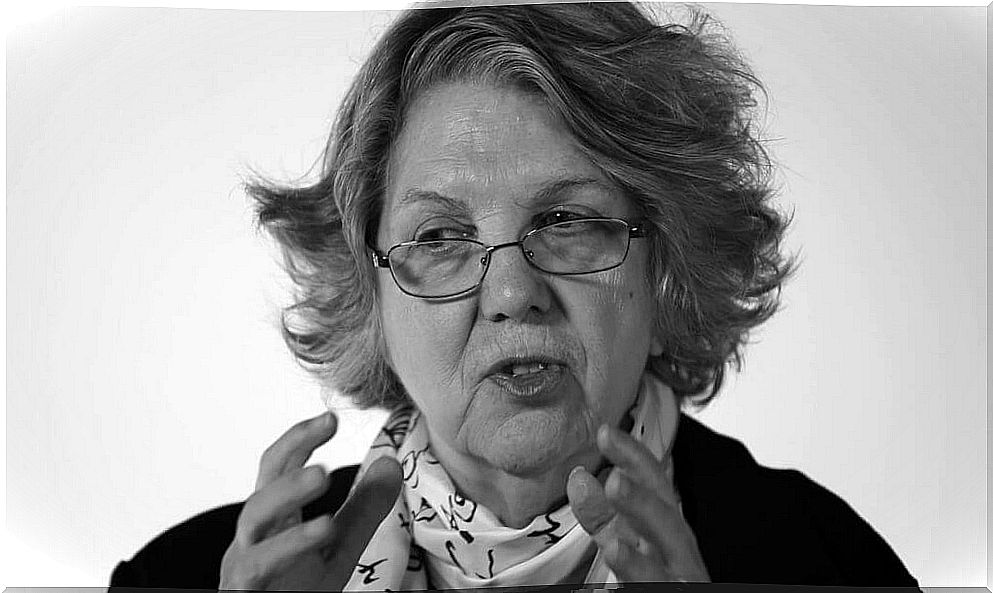Marsha Linehan: From Patient To Psychologist To Win TPL

Marsha Linehan is an American psychologist, professor and author, creator of dialectical behavior therapy. It is a theoretical and treatment model developed for patients with borderline personality disorder (BPD), combining behavioral therapy techniques with principles of acceptance of reality derived from Zen and dialectical philosophy.
Despite this, this woman still bears the stigma of her past with BPD, and the burn marks and cuts on her arms are evidence. In the past, Marsha was a patient with a very serious prognosis, and spent 26 months in hospital. “I was in hell,” she said of that period in her life.
The chronic feeling of emptiness, emotional instability and the need to please others turn into a real nightmare for BPD sufferers.
In fact, your identity continually depends on the evaluations of others. The fear of abandonment is so intense that the individual may feel that, unintentionally, he ends up causing it.
The Painful Life of Marsha Linehan
Marsha Linehan has wandered desperately from specialist to specialist for 20 years. Her prognosis said she had little chance of surviving. Suicide attempts continued, and with them, new hospital admissions.
Despite everything, this impressive woman wanted to recover. Without giving up on her struggle, she got a job as an employee of an insurance company. At the same time, he began taking evening classes at the university.

Very religious, Marsha attended church regularly. From this time, she recounts: “One night I was kneeling there, looking at the cross, and the whole place turned golden. Suddenly, I felt something coming to me. I ran to my room and, for the first time, I spoke to myself in the first person: I LOVE ME. From that day on, I felt transformed”.
For a year, she worked on her feelings of helplessness. During this time, she was able to understand and accept her emotional storms: she learned to deal with her emotions from a better knowledge of herself.
In addition, she went through years of study in psychology, during which she earned a doctorate at Loyola University Chicago in 1971, which helped her understand her metamorphosis.
What transformed Marsha Linehan’s experience was that she accepted herself the way she was. This acceptance became increasingly significant when she began working with patients, first in a clinic with people with suicidal ideas, and then in the research area.
Your treatment proposal
She wanted to show that therapy could help patients acquire new behaviors and learn to respond differently. However, deeply suicidal people often “failed” countless times in their intentions to overcome the disorder.
Marsha’s approach imposes a new rationale: the behavior of these people is generally logical in the face of suffering. It emphasizes two main ideas:
- The acceptance of life as it is, not as it is supposed to be.
- The need to change despite the acceptance of reality.
Later, the researcher scientifically tested her theory in the real world. “I decided to help people with suicidal tendencies because they feel the most miserable in the world. They believe they are bad and I realized they are not. I understood this because I went through the hell of suffering, with no hope of getting out of it”.
Marsha chose to treat people diagnosed with borderline personality disorder, characterized by dangerous behaviors such as self-injury. She did this through a reciprocal “contract” with these people: they have to commit to following the therapy to the end in order to have the opportunity to live.
The strengthening of Marsha Linehan as an academic figure
Dr. Marsha Linehan rose through the academic ladder from the Catholic University of America to the University of Washington in 1977.
In the 1980s and 1990s, research was conducted that showed the progress of approximately 100 high-risk suicidal patients with BPD who had undergone dialectical behavior therapy in weekly sessions.
Compared with other therapies, patients committed fewer suicide attempts and returned to hospitals less often.
The fundamental aim of dialectical behavior therapy is for the patient to learn to regulate extreme emotionality and its impulses. In this way, it is possible to reduce dysfunctional mood-dependent behaviors.
Furthermore, the patient is taught to learn to trust and validate their own experiences, emotions, thoughts and behaviors.

As a differential compared to other cognitive-behavioral programs, dialectical behavior therapy is an intervention based on therapeutic principles, and not on a treatment manual.
This program is based on a hierarchy of therapeutic goals that are addressed in terms of their importance. The hierarchy established in individual therapy is as follows:
- Solve suicidal and parasuicidal behaviors.
- Change behaviors that interfere with the course of therapy.
- Eliminate behaviors that affect quality of life.
- Develop the behavioral skills that help achieve well-being.
This structure allows for a flexible approach depending on the needs of each patient. Furthermore, it is important because it refers to a change in the focus of intervention.
Cognitive-behavioral therapy focuses on finding the solution to emotional problems through behavioral and cognitive change . On the other hand, Linehan puts his emphasis on acceptance and validation to, from there, achieve change.
Thanks to his work, thousands of lives have been saved around the world.








